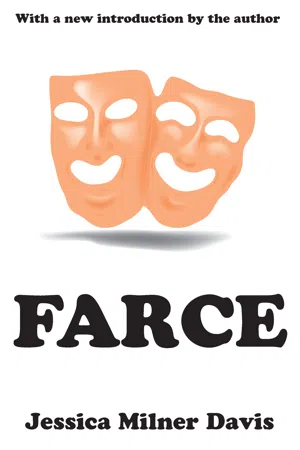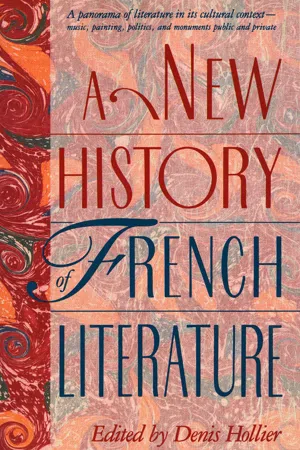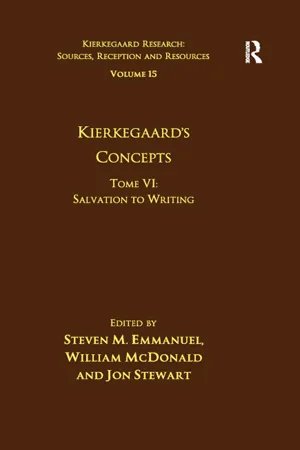Farce
Farce is a comedic genre characterized by exaggerated, improbable situations, physical humor, and absurd plot twists. It often involves mistaken identities, misunderstandings, and chaotic events. Farce aims to entertain and amuse through its exaggerated and often ridiculous portrayal of characters and events, creating a sense of lightheartedness and laughter for the audience.
3 Key excerpts on "Farce"
...Allardyce Nicoll, whose pioneering work, Masks, Mimes and Miracles (N.Y., 1963), attempted to trace the sub-literary traditions from the classical world through the Dark Ages into mediaeval Europe, reflects this re-evaluation in his treatment of dramatic theory. In the second of his two theoretical studies, Farce is regarded as an essential component of a good comedy. He explains: When we say that every comedy should be based upon Farce, we mean simply that the rough physical framework provides an excellent skeleton for comedy’s richer qualities and that without this it is in danger of becoming too delicate and too refined for theatre’s daily food. (The Theatre and Dramatic Theory, London, 1962, p.88) This kind of approach is of little use, however, in the attempt to come to grips with Farce as a genre. As long as it is viewed as existing in symbiosis with “richer” forms of comedy, Farce can only be characterized by negatives—the more exaggerated characterizations, the cruder coincidences and the grosser pieces of joking belong to the Farce, while the more sophisticated elements of plot, character and theme are those of comedy proper. Throughout its history, critics have tended to see Farce in this negative light and to dismiss it as a genre with brief descriptions such as Nicoll’s “rough physical framework,” or “gross and improbable characterization,” “horse-play and slap-stick.” For L.J. Potts, Farce is “comedy with the meaning left out; which is as much as to say, with the comedy left out” (Comedy, London, 1949, p.37). Many critical works on types of the drama do not even bother to define what is meant by Farce; and those that do, rarely do so with objectivity. In “A Note on Farce” (Quarterly Journal of Speech, XLVI, 1960), J. D...
- eBook - ePub
- Denis Hollier(Author)
- 1998(Publication Date)
- Harvard University Press(Publisher)
...It is preceded by a cri, a charming enumeration of all the varied fools (sots and sottes) who are summoned to watch the play. Unlike the other two genres, Farces are still considered “good theater” today. They are comic rather than satirical, involve characters drawn from real life in plausible situations, and frequently end with the deceiver deceived or the villain punished. The late 13th-century Le garçon et l’aveugle (after 1266; The Boy and the Blind Man) is sometimes claimed as the first Farce, but most that can be dated are from the years 1450–1550. Like good Farce of any age, they rely heavily on stock characters and plots, which are often reminiscent of the earlier fabliaux. Husband and wife argue and fight, merchant and customer cheat each other, teacher tries to instruct stupid pupil. Parish priests are seducers, soldiers are braggarts, and housewives, gossips. Action is fast-paced and lively, involving much disguise, hiding, urinating, beating, and hurling of fish, tripe, milk, or pitch. Peculiar to these plays is a delight in the ambiguities of language, often expressed in a title with an obscene double meaning: Farce des femmes qui font récurer leurs chaudrons (early 16th century; Farce of the Women Who Ask the Tinker to Mend Their Cookingpots), or a character who is comic because he is unaware that language can be ambiguous: Mahuet, told by his mother to give (sell) his eggs au prix du marché (at the market price), gives them away to a rogue who says that his name is Market Price. As this last example implies, folly is an important theme in Farces as in soties. Husbands unable to dominate their wives are fools, as are naïve servants, nitwitted pupils (who cannot answer the question “Who was the father of the Four Sons of Aymon?”), and absentminded shoemakers...
- eBook - ePub
Volume 15, Tome VI: Kierkegaard's Concepts
Salvation to Writing
- Steven M. Emmanuel, William McDonald, Jon Stewart(Authors)
- 2016(Publication Date)
- Routledge(Publisher)
...Vaudeville/Farce Mads Sohl Jessen Farce (Farce —noun), Vaudeville (Vaudeville —noun) The concept of Farce derives from the French Farce. The concept contains two different meanings in Danish. First, it relates to a theater genre defined by hilarious mishaps and funny situations. The second meaning is of something happening in the world that one cannot possibly take seriously. 1 Vaudeville is a noun that comes from the French vaudeville. The word derives from Old French vaudevire or vau de Vire, the valley of Vire (Normandy), a place well known for its song tradition in the fifteenth and sixteenth centuries. Its lexical meaning in Danish is the same as in French; it denotes a light comedy with inserted songs and musical accompaniments made for dramatic performances. 2 I. Farce Kierkegaard uses the Danish word Farce only three times in his published writings and twice in his journals. However, English readers know Kierkegaard as an exquisite interpreter of theater Farces in Repetition. In fact, Kierkegaard’s pseudonym Constantin Constantius uses the German concept of Posse in the original Danish to refer to the theater play he sees in Berlin. On the other hand, the translation of Posse into “Farce” is legitimate, and I will therefore comment on Constantius’ extensive deliberations on Posse /Farce. First, I will present Kierkegaard’s five references to the actual Danish concept of Farce in chronological order. In 1837 he refers to “Farce” as belonging to the genre of lower comedy together with burlesque. 3 He does not use the concept again until the Concluding Unscientific Postscript, where Johannes Climacus argues that the religious has been subsumed by the aesthetic: “But all this balderdash is the result of having made the religious a Farce.” 4 Climacus also relates what he refers to as the religiosity of the “arrogating revivalist” 5 to “Farce” 6 in the same work...


